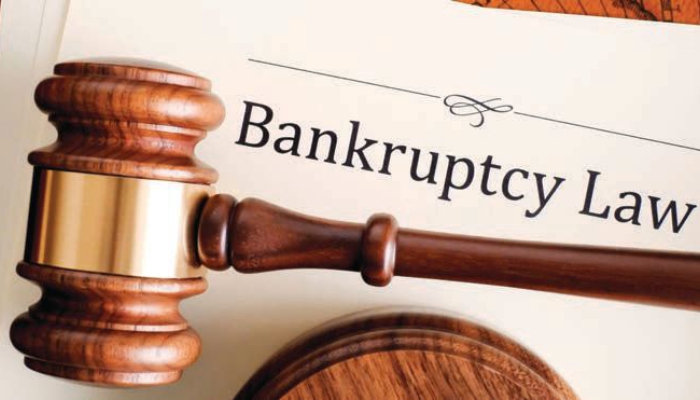
or

The Insolvency and Bankruptcy Code 2015, which was passed by Lok Sabha on 5th, May, 2016 in Lok Sabha, which gave a new direction to the Indian Laws relating to the Bankruptcy and Insolvency which was previously governed by Presidency Towns Insolvency Act, 1909, applicable to the presidency towns of Bombay, Calcutta and Madras, and Provincial Insolvency Act, 1920, applicable to the rest of India. Due to the archaic nature of the Acts the Country was facing huge issues pertaining to the Bankruptcy and Insolvency Laws. India is a capital starved country and therefore it is essential that capital is not dissipated on weak and unviable businesses.
Previous to the Code the bankruptcy proceedings in India were governed by multiple laws like “The Companies Act”, “SARFAESI Act”,” Sick Industrial Companies Act”, and so on.
The complete process of winding up is also very lengthy and time consuming , with courts along with debt recovery tribunals and the Board for Industrial and Financial Reconstruction, all having their applicability during the process. The Insolvency and Bankruptcy Code 2015 aims to streamline and consolidates all the laws together to make the process of winding up simpler. It is anticipated that the change will provide an easy exit option for insolvent and sick organisations.
The MCA has issued notification for Constitution of the NCLT and NCLAT with effect from 1st June, 2016. Hon’ble Justice S.J. Mukhopadhaya, Judge (Retd.), Supreme Court of India has joined as the Chairperson of the NCLAT and Hon’ble Justice M. M. Kumar, Judge (Retd.) has joined as the President of the NCLT. With the constitution of the NCLT, the Company Law Board constituted under the Companies Act, 1956 stands dissolved. Initially, NCLT will have eleven Benches, two at New Delhi and one each at Ahmedabad, Allahabad, Bengluru, Chandigarh, Chennai, Guwahati, Hyderabad, Kolkata and Mumbai.
The government is aiming to make the new bankruptcy law operational by the end of 2016-17, as India aims to set up the necessary infrastructure to implement its new insolvency framework. To sped up this, the government will focus on making the NCLT operational and also act as the regulator till it sets up the Insolvency & Bankruptcy Board.
Mr. Jayant Sinha, minister of state for finance, in an interview earlier mentioned that “Till we have an operational entity of the Insolvency Board set up, the central government itself can exercise those powers. Once we have the people selected, we can get the Insolvency Board up and running and the powers can be transferred from the central government to the board.”
The government had also introduced few amendments to the DRT Act in the budget session of Parliament, but these are under review. It is expected that the Bankruptcy Code, along with the proposed changes in India’s two debt recovery and enforcement laws, will help in resolving India’s bad debt problem and consequently repair the impaired bank’s balance sheets.
The major difficulty of the complete implementation of the code is the scarcity of the competent insolvency professionals. At present, when the court passes a liquidation order, the implementation the such order takes years. This vacuum has to be addressed through the proper implementation of the Code, for the whole system to work out as envision.
Priyeta Chowdhury is the Manager Legal at Mitsui & Co. India Pvt Ltd. Previously, she was associated as in-house counsel , with organisations like Dell International Services, Balaji Telefilms Limited and Lanco Infratech Limited.

Lex Witness Bureau

Lex Witness Bureau

Lex Witness Bureau

For over 10 years, since its inception in 2009 as a monthly, Lex Witness has become India’s most credible platform for the legal luminaries to opine, comment and share their views. more...
Connect Us:


The Grand Masters - A Corporate Counsel Legal Best Practices Summit Series
www.grandmasters.in | 8 Years & Counting
The Real Estate & Construction Legal Summit
www.rcls.in | 8 Years & Counting
The Information Technology Legal Summit
www.itlegalsummit.com | 8 Years & Counting
The Banking & Finance Legal Summit
www.bfls.in | 8 Years & Counting
The Media, Advertising and Entertainment Legal Summit
www.maels.in | 8 Years & Counting
The Pharma Legal & Compliance Summit
www.plcs.co.in | 8 Years & Counting
We at Lex Witness strategically assist firms in reaching out to the relevant audience sets through various knowledge sharing initiatives. Here are some more info decks for you to know us better.
Copyright © 2020 Lex Witness - India's 1st Magazine on Legal & Corporate Affairs Rights of Admission Reserved